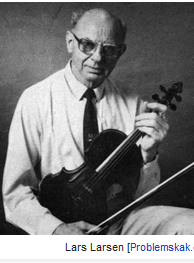Master's words

Three helpmates for Daniel, the easiest being the longest! Which is, according to Ch. Jones, a "wonderful find".
A nice cyclic but not boring 3# from a famous pair of great composers. And two other 3#s by a Dane, also of considerable size. One illustrates a well-known theme, the other deals with pinnings not yet apparent on the diagram.
A 4# with model sacrifices and mats, then two moremovers, one of them French. The 9# is easy, but I prefer to "forget" to erase the 18# solution.
Finally the traditional selfmate, quite difficult, because there are two candidate moves for the key, and the threat is hardly obvious. I will give you the solution if you beg me.
A hasty comment from a great Hungarian player, who seems to have forgotten a certain Germanic doctor!

A study without pawns, but by no means austere. In the style of oscillation... Everything is human, no tablebase with wins in 70 moves.
When you have a wPc7 in the Rook endgame, you prefer, all things being equal, that the Black King is on g1 than on h2: the g3-f4-e5 path seems shorter. Well, it will be the opposite here, we will voluntarily move up the bK. But why? To prevent it from slipping through f1-e2. Then two ZZs settle the matter, where we discover that the said King is better in h1 than in... h2.
A small variation on the corridor mate, which will take you only 30 seconds.

When a game has a triple richness (opening, middle and end), it is wise to devote two sessions to it, as we did for example for Capablanca-Bogolyoubov 1925. But our times have become too convulsive. One of the last adjourned parts of history, which shows us the superiority of "Polou" analyses, nocturnal, but human, the cybernetic monsters being quite incapable of demonstrating the win.
See you, God willing, in three weeks, on Tuesday 4 March.
Enjoy your meal.
Add a comment